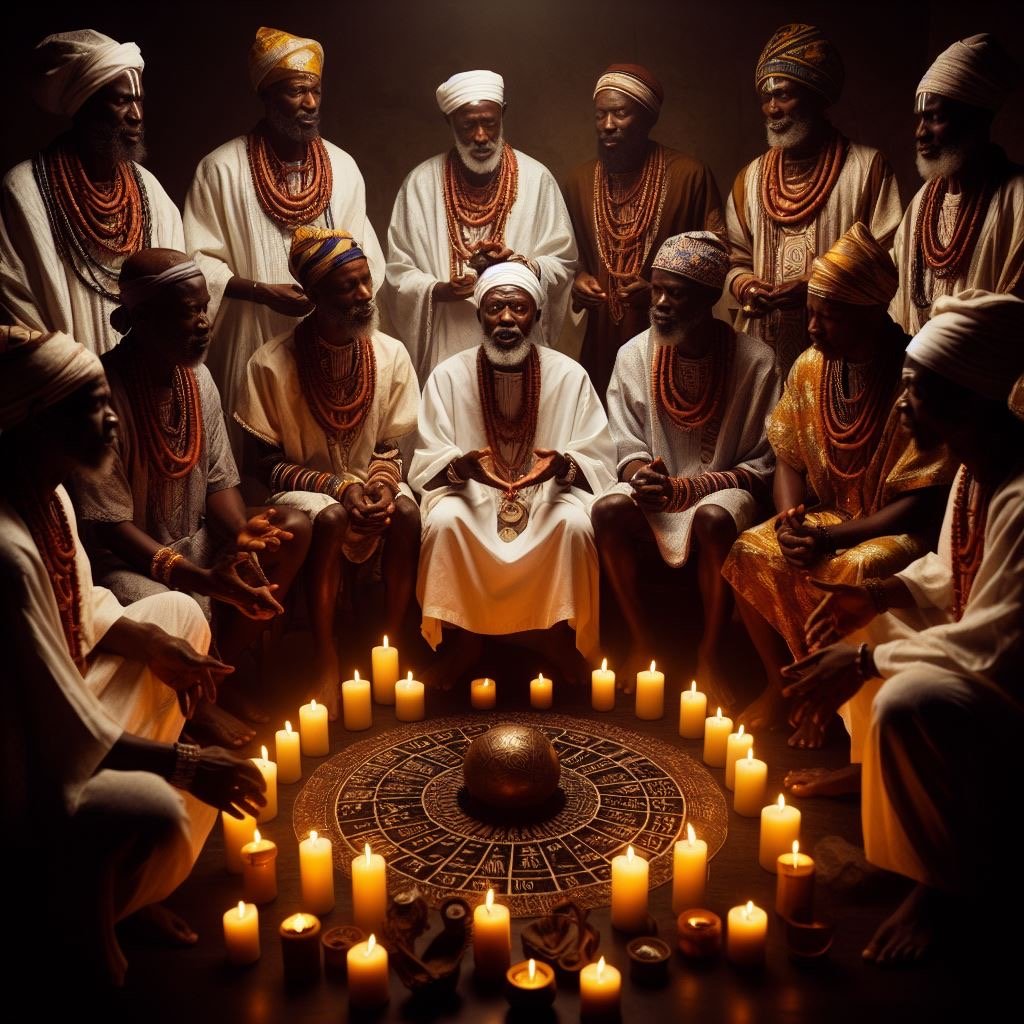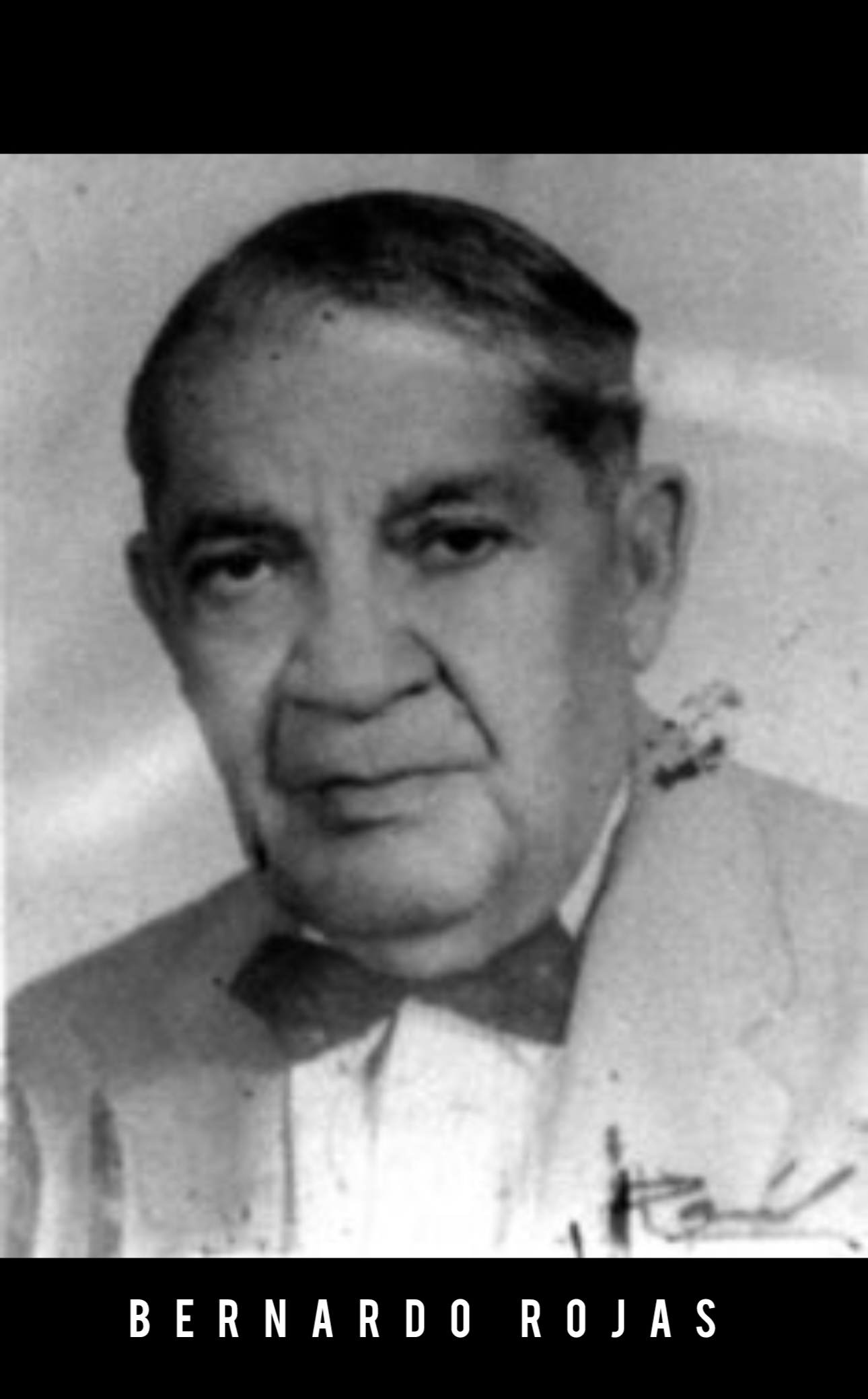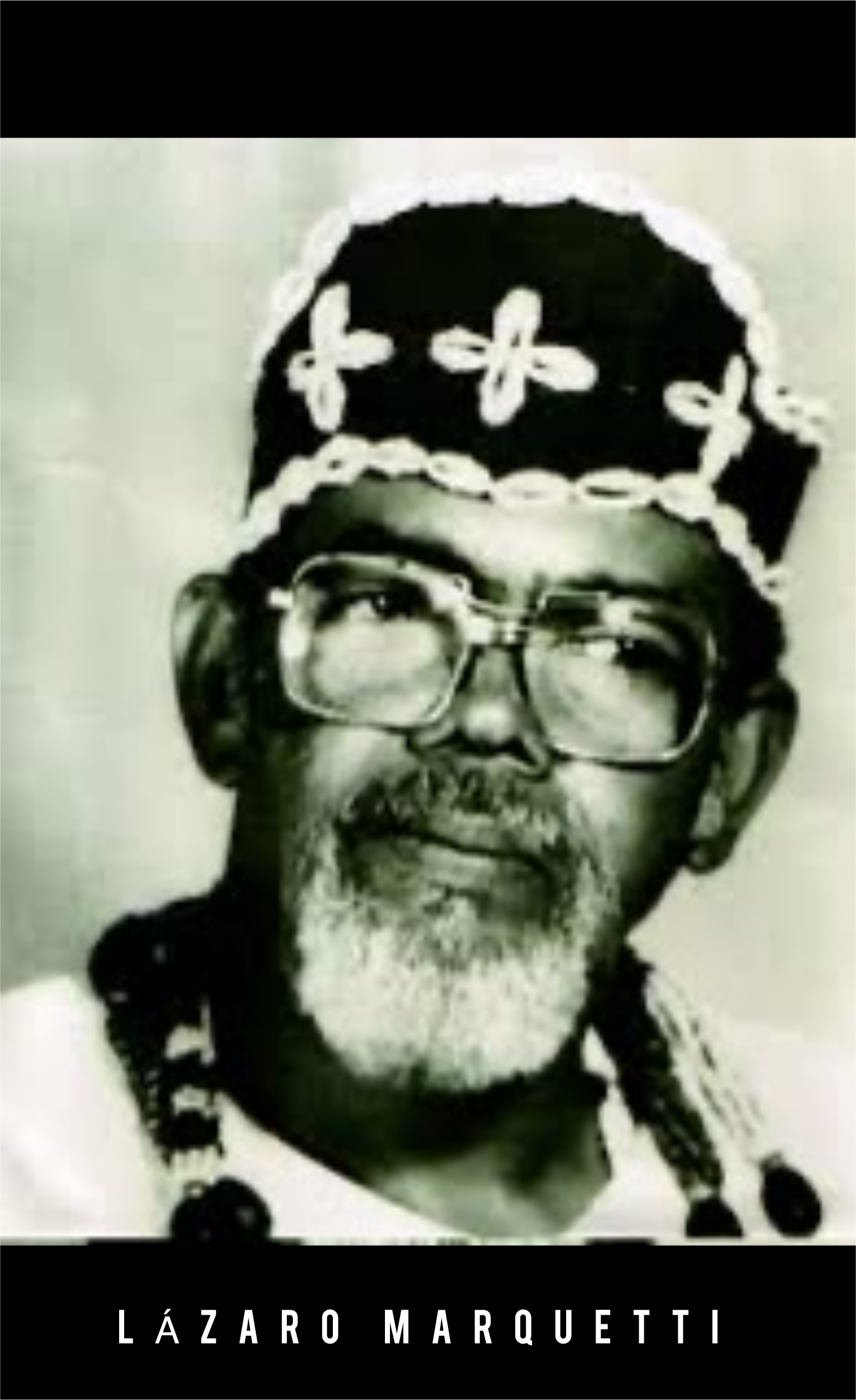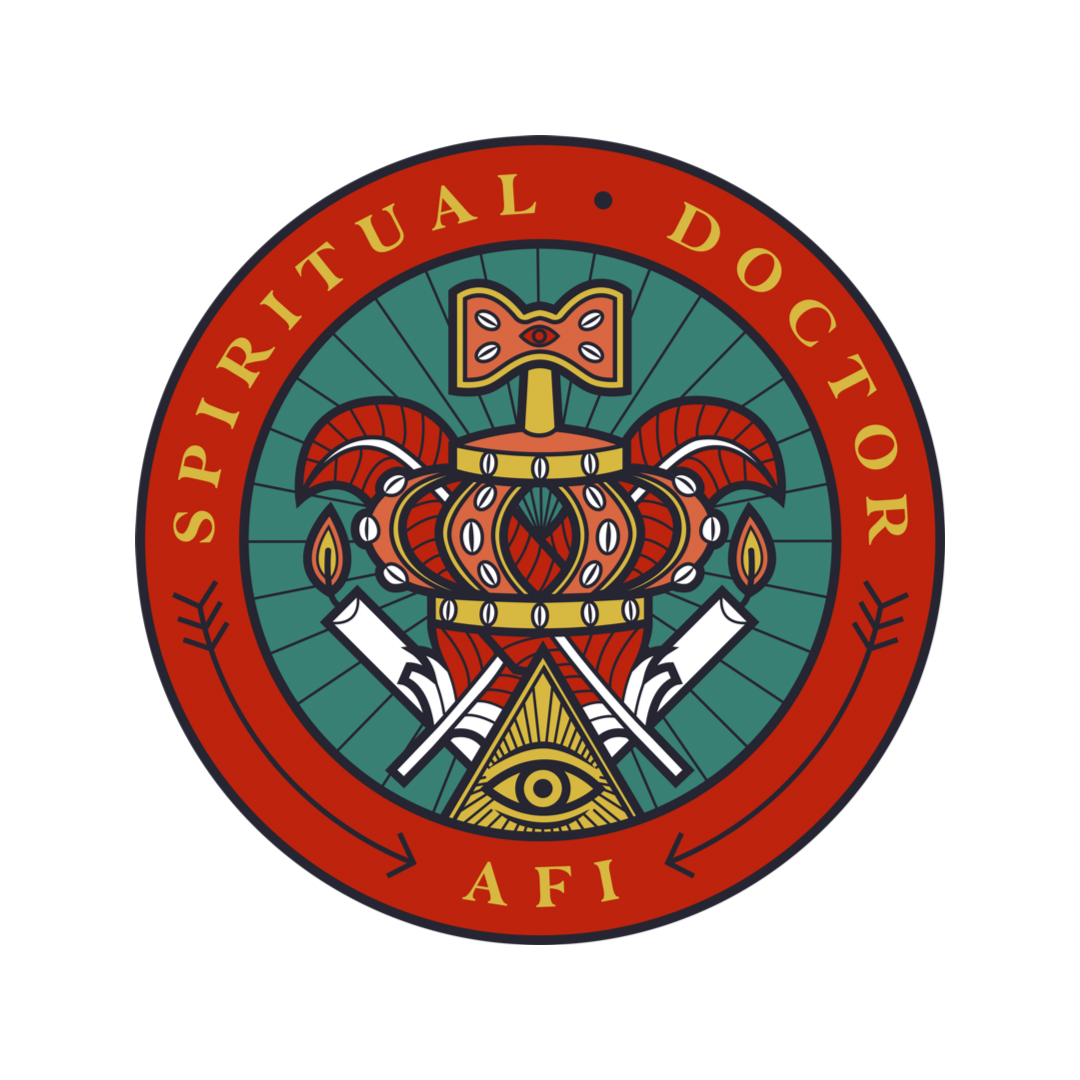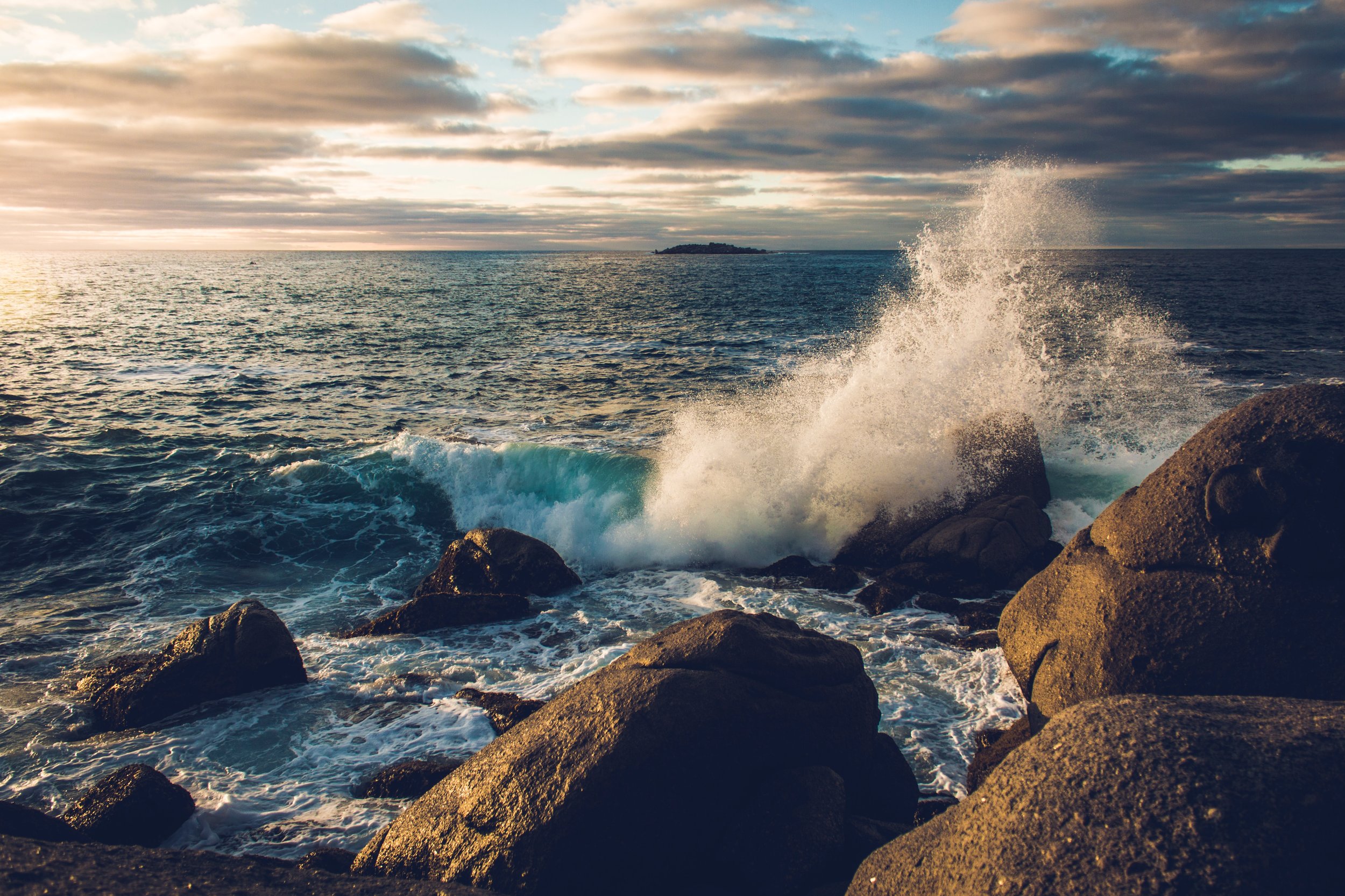Where to begin on this topic of “ La Letra Del Año” (The Letter Of The Year). For those of you who don’t know, “La Letra Del Año” is an Afro-Cuban terminology used to describe a specific kind of divination performed every year by priests in the tradition of Ifá. In such a divination, a particular Òdu, which means “sign” (there are 256 combination signs), is divined through the oracle of Ifá, and such Òdu becomes the ruling sign for the year. Each of the combination of signs, again, 256 of them, encapsulates an apàtakí (a story. A story of the Òrísha/s), favorable outcomes, negative outcomes, warnings, a number of prescriptions for growth, elevation, healing, harmony, peace, health, and much more. It addresses both personal and social matters, as well as matters of global concern. In each Òdu there are your do’s and your don’ts. And in each Òdu, there’s a specific area of focus in terms of what to look out for in order to not live the negative aspect of the Òdu. All with the intent of being able to live the most balanced life possible. Every Òdu is (can be) very extensive.
Back way then, in Cuba, when none of us reading this right now were even breathing on this Earth, there were literally just a little over a handful of reputable Babaláwos (Priests of Ifá) who would gather together on December 31st of every year to divine for “La Letra Del Año”. The very first person who in Cuba performed the divination for “La Letra Del Año”, was the late Remigio Herrera, better known in history by his Yoruban name Adeshína (crown of fire or the crown the creates fire). He arrived to Cuba as an enslaved African in the year 1830. He was Cuba’s first priest of Ifá, or better stated, the first Ifá priest to arrive to the island.
REMIGIO HERRERA, ADESHÍNA
It is not known exactly in what year the first “Letra Del Año” divination took place in Cuba but it must have been sometime in the mid 1800’s. Adeshína transitions in 1903 or 1905. It is also important to clarify the fact that such divination reading did not start in Cuba. This was a custom that was brought to Cuba by Adeshína and whom along with a handful of his Godchildren, he established and continued this sacred practice in the island. When Adeshína became ill, the elders say that one of his Godchildren by the name of Eulogio Rodriguez, better known as Tata Gaytán, another prominent and reputable Babaláwo, continued the practice of performing the divination for the letter of the year. And upon Adeshína’s passing, it was the great Bernardo Rojas who became Adeshína’s successor, being the he was the one who inherited Adeshína’s religious deities. And therefore, Bernardo Rojas, Tata Gaytán, and others, continued with the tradition. A little background info: Bernardo Rojas was my paternal grandparents Godfather in Ifá. Bernardo Rojas was also present when my mother received what’s called, ikofá at 13 years of age.
Back then, as my late Godparents and my parents have taught me, there wasn’t this proliferation of Babaláwos all over the place. Now there are literally thousands of Babaláwos all over the world and in the most remote of places you can think of. You can practically lift up a rock and find a Babaláwo under it. What happens then and how have things changed, in my opinion and in the opinion of most old-school elders, for the worse and not the better? It is indeed an indisputable fact that obviously life has to change. Things have to evolve. If not, we’d still have a caveman’s mentality. So there’s absolutely nothing wrong with evolution, change, and adaption. BUT, I always say, such evolution, changes, and adaption should remain unadulterated to the essence from which it stems from. This being said, for over one hundred years, “La Letra Del Año” was something performed with intimacy, and respect, behind closed doors and for the Òrísha community within Cuba. As the years would pass, more Babaláwos would become initiated into the practice of Ifá but still within limits. These Babaláwos from different lineages would still get together to perform the sacred divination. All would gather under ONE roof. To this day, my parents (both now having been initiated well over 60 years ago), still remember how it use to be back in their time.
They state that, “La Letra Del Año” was never splattered all over the place nor shoved in people’s faces. The elders in the community would obviously learn of the predictions for the year and they would discuss/share it with other elders within the community and each initiated person/elder would know what of it, to do and or implement, within their ilé (religious house). And that was it!
Fast forward: In the late 1980’s around 1984-86, a prominent and famous Babaláwo in Cuba by the name of Miguel Febeles Padrón who was a Godson of the late Tata Gaytán (Tata was actually what is called, his Ojubona in Ifá), along with another respected Babaláwo by the name of Làzaro Marquetti, was when they founded what is known to be “La Comisión Organizadora de la Letra del Año” (Organizing Commission of the Letter of the Year). From that moment on, it is when “La Letra Del Año” began to embody more of a global approach and also gained global popularity. This also occurs and spreads much more quickly due to two main factors. One being the Mariel Boatlift of 1980 which was a mass emigration of Cubans who left the island. We are talking about an estimated 125,000 plus Cubans left Cuba. And secondly, the fact that by 1980 there were already many initiated Babaláwos in Cuba. Well over 300 and whom a vast majority of these 300 plus Babaláwos, immigrated to America and other countries as well. Another side note: The late Miguel Febles Padrón was one of the active Ifá priests present in the ritualistic ceremony when my late stepfather was initiated into Ifá in the year 1960.
My late stepfather. A beautiful soul.
So what does the above tells us? It tells us that by way of this massive exodus and the great number of Babaláwos that left the impoverished island of Cuba to other parts of the world to be “free”, this also brought along the breaking away of old customs. Not all Babaláwos were bad of course. The vast majority with excellent knowledge but, now away from their homeland, in a foreign place, starting a new life, and with all kinds of liberties at their hands, and little to no elder supervision, new customs and/or new ways of doing things also emerged. We must recognize that this latter statement is inevitable. One thing remains true in the minds and hearts of the old-school elders that still remain breathing on this Earth, and, who’s beliefs I too subscribe to: And that is that, the further away you are from the roots, the riskier and more explorative people become. This means that countless of initiated priests and priestesses that migrated out of Cuba and the tens of thousands of people around the world who are now initiated into these sacred traditions, would not dare to do the things they do in the presence of ancestors like Remigio Herrera, Tata Gaytán, Bernardo Rojas, and the countless of others I can mention.
Even when I was growing up, I always heard, by way of my parents, my direct elders, and the many elders in the community, of ONE letter of the year. Now-a-days, there are literally dozens and dozens all over the place. Sadly, even in Cuba there are several “Letra Del Año” being divined in different regions of the island. There’s the one considered to be the main one, which I mentioned above, the one that comes from the Organizing Commission of the Letter of the Year. It’s considered the main one because even though its founding commission wasn’t until 1986, this is the same house and the same location that has been doing it since the very beginning. It goes down at a house referred to as, La Casona de 10 de Octubre (the Mansion or the large house of the 10th of October). It refers to a huge house that sits on a road named “10 de Octubre”. This was “THE” place, if you know what I mean. Now, we also have ”La Letra Del Año” that comes from La Asociación Cultural Yoruba De Cuba (The Yoruba Cultural Association Of Cuba), and countless of others. Too many!
And before anyone else says it, I will address the following concern: Many argue stating the follwoing: “…but I don’t live in Cuba. Why would I want to follow “La Letra Del Año” from Cuba when I live in California?”, to which I say this: Anyone that understands the depth of these sacred traditions and maintains the teachings of the ancestors from back in the day would say, Ifá is ONE. Whether you live in Cuba or live in New York City or live in Europe, Ifá is ONE. What this means is, when Ifá (Orisha as well) speaks, their word, what they convey is a firm word that can’t be refuted nor denied. So, with this in mind, it is extremely contradictory, puzzling, and confusing to have one sign come up in Havana Cuba, other signs in other regions of Cuba, another sign come up in New York City, other signs in Miami, other signs in California, and so on. It’s misleading. So that you have a better idea of what I am attempting to convey here, this is equivalent to going to the doctor for a diagnosis and one doctor in Miami tells you one thing, another doctor in New York tells you something else, and another three doctors in Cuba give you three other diagnosis. Which can you really follow without actually running the risk of dying? You can’t put yourself under five different medical treatments. Your body will collapse. So, understanding this metaphorical example, the same applies to “La Letra Del Año”. How many warnings, advice, concerns, do’s and don’ts can I adhere to, in a healthy and successful kind of way? For this reason, because now-a-days there are countless of different “Letra DeL Año” out there, many elders have fallen back to just following the advice that personally comes up for them in their personal reading at the beginning of the year.
MUCH NEEDED CLARIFICATION: I’ve been seen incoherent and wrongful information out on these social media streets referencing to there being three Òríshas ruling this year. Whoever says this, knows absolutely nothing!! It’s never been three and it could never be three. No exceptions. It’s always been one main ruling Òrísha and a second accompanying ruling Òrísha. One male and one female or vice versa, one female and one male. In this particular case, the two ruling Òríshas for 2024 as divined by “La Casona De 10 de Octubre” are, Èlégba and Yemayá. Whichever guiding “Letra Del Año” you want to follow, so be it. But at least be informed. Be informed on the history of things before you go out into the world regurgitating and sharing information you have no authentic knowledge nor experience on. It is also important for me to bring into your awareness the fact that, some people really should not be intaking the information expressed in some of these letter of the year divination readings out there today. Why? Because, if I really have to say this, some of these ilé’s (religious houses) out there today are been led by people who indeed might be initiated and they might be priests and priestesses, but, who are not equipped to guide no one and all they are doing or attempting to do is, guarantee their financial earnings they want to make by way of the so-called ebbó (sacrifice, healing cleanse, offering) they intend to impose on you because, “it came up in the letter of the year”. There’s too much of this going on.
Again, at the risk of sounding redundant, your best course of action would be to have your own personal reading done by a knowledgeable elder in your community. Nothing beats having your own reading performed and receiving specific knowledge, guidance, and wisdom that’s prescribed to you. I will also add that, even if in the “Letra Del Año” is said that the ruling Orishas for this year are Èlégba and Yemayá (Yemojá), if you are called to work with another Òrísha this year, then follow that. For this reason, a personal reading is of most importance. Why? Because each Òdu is governed by a specific Òrísha(s). So once you have YOUR reading, you should be informed of which Òríshas are on your team this year for you and for the win.
And lastly. For the many of you messaging me asking which “Letra Del Año” do I follow? My answer is, I follow, NONE. I always see what it says (it being, the letter of the year as divined by “La Casona De 10 de Octubre), and I look at what they recommend, but I don’t follow none. Those of us who are actually initiated and crowned in the Lukumí system of Òrísha tradition, I follow the recommendations of many old-school elders when they say, the ruling Òríshas are the ones we have crowned on our head and are initiated to. No other. And the prescriptions, warnings, advice, do’s and dont’s for the year, are the ones that come up for me in my personal beginning of the year reading. As an initiated priest/priestess, you have a responsibility to check-in with Òrísha at the beginning of the year. Either by way of a shell divination reading through Èlégba or if your religious house is mainly guided by Ifá, then it is your reading with Ifá at the beginning of the year that will show you the path to follow for the year. Many do and sadly, many don’t. To each their own. 🤷🏾♂️ At the end of the day, you have the power to choose what best suits you, but, let there be no mistake. There are many of us still around that knows the real history of these sacred traditions. Please do not allow the “INANET” in these social media streets confuse you. Seek a reputable elder to guide you in this sacred path. May the Most High, Òlódumare, shower you this year with nothing less than infinite blessings.
Divine Love,
Spiritual Doctor AFI
